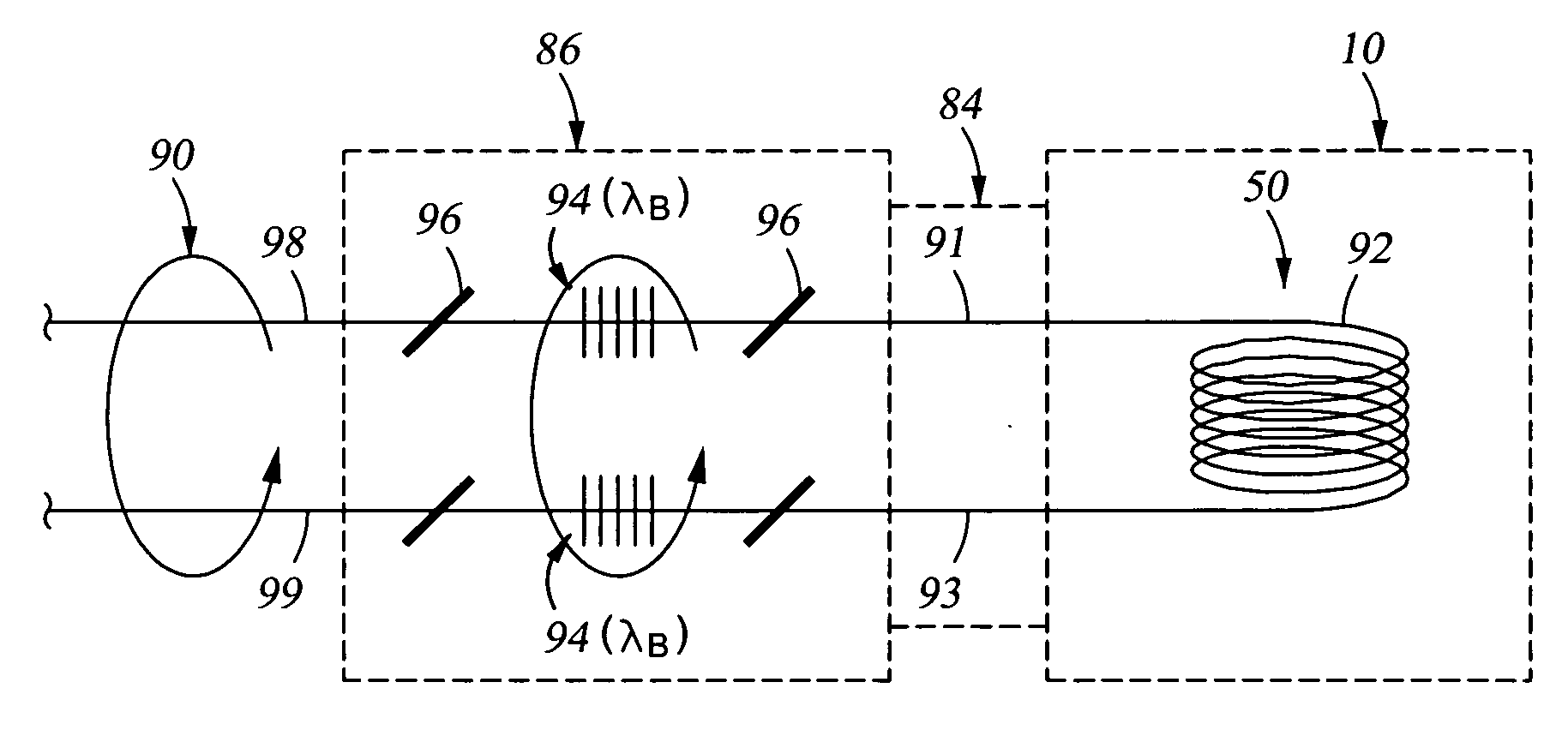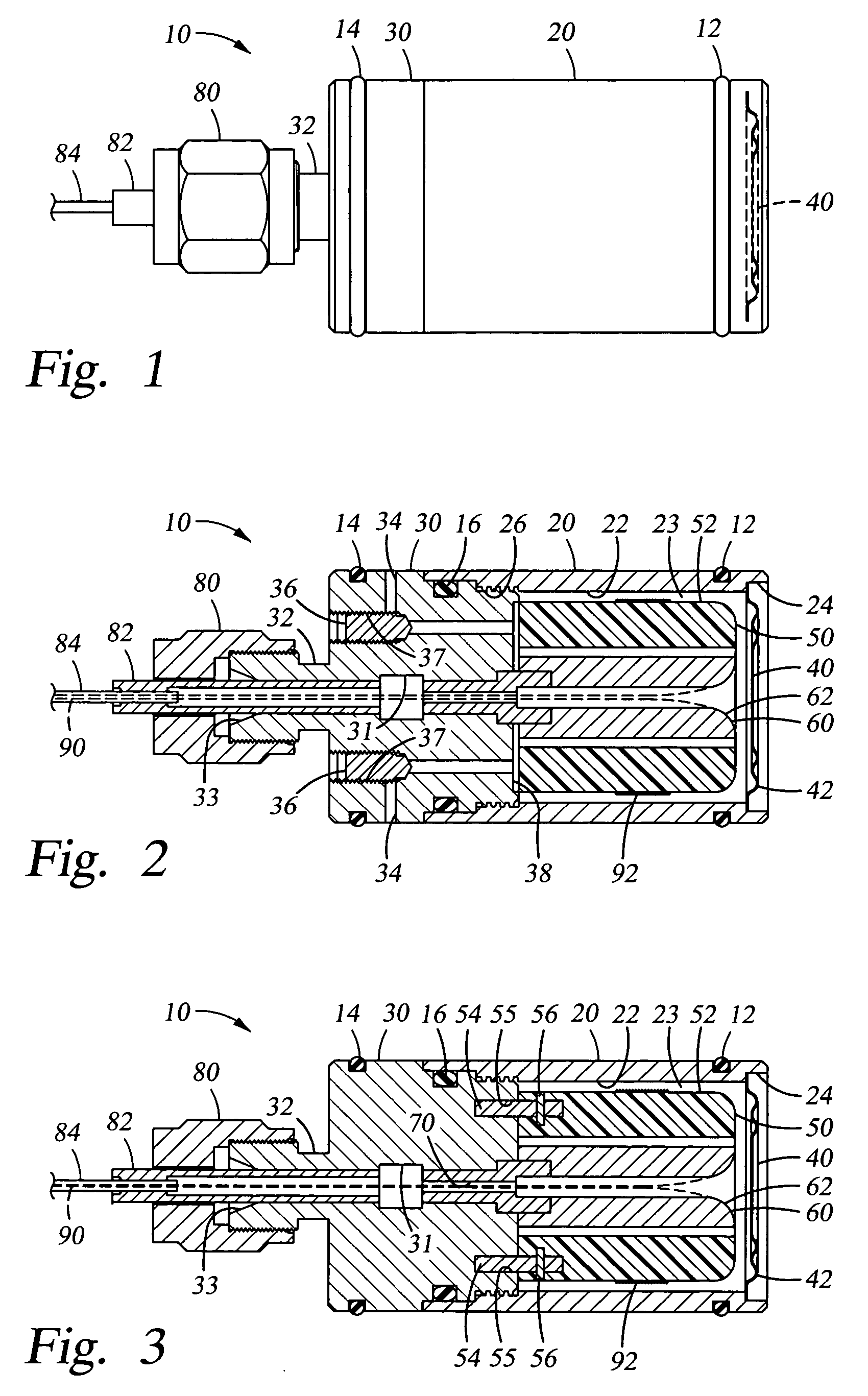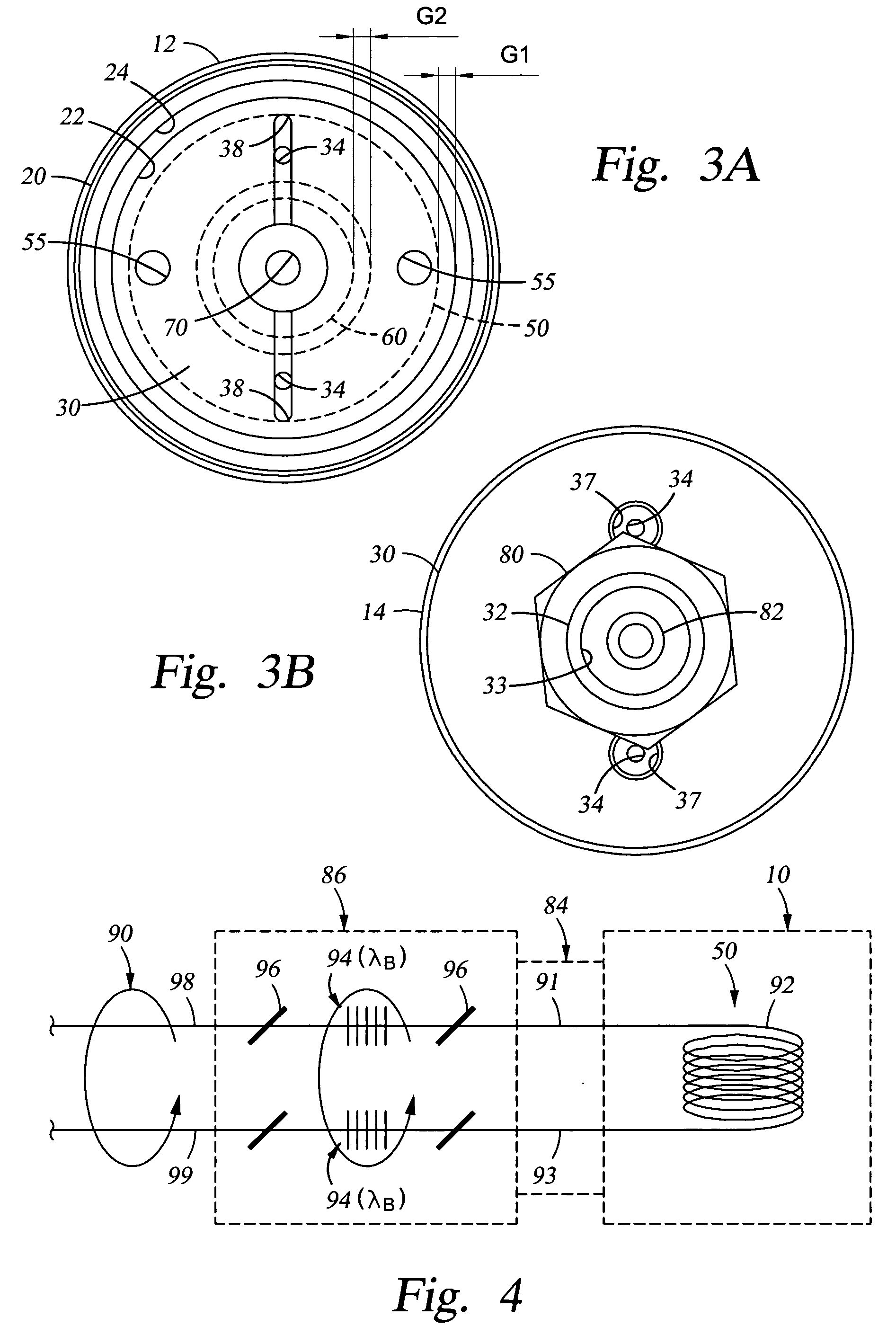High pressure and high temperature acoustic sensor
a high-pressure acoustic sensor and high-temperature technology, applied in the field of sensors, can solve the problems of mandrel deformation, disturbance of optical fiber, and the belief that most prior-art hydrophones are unsuitable for deployment in extremely harsh environments
- Summary
- Abstract
- Description
- Claims
- Application Information
AI Technical Summary
Problems solved by technology
Method used
Image
Examples
Embodiment Construction
[0049] As best shown in FIG. 5, the hydrophone 100 is comprised of three subassemblies: a front subassembly 102, an internal subassembly 104, and a rear subassembly 106. The front subassembly 102 includes a front housing 120, a diaphragm 140, and a clamp ring 126. During fabrication of the front subassembly 102, the diaphragm 140 and clamp ring 126 are welded to an end 124 of the housing 120.
[0050] The internal subassembly 104 includes a sensing mandrel 150, a mounting assembly 170, cross-rotational pin 188, and a plurality of O-rings 192,194, and 196. The sensing mandrel 150 has an internal bore or tunnel 152, an outer sensing surface 154, a top end face, a bottom end face, and a number of fiber organizing features detailed below. The mounting assembly 170 includes a mounting disk 172 having an attached axle 174 and includes an end disk 176. During fabrication of the internal subassembly 104 and as best shown in the assembled state of FIGS. 6A-B, optical fiber 90 is wound on and bo...
PUM
 Login to View More
Login to View More Abstract
Description
Claims
Application Information
 Login to View More
Login to View More - R&D
- Intellectual Property
- Life Sciences
- Materials
- Tech Scout
- Unparalleled Data Quality
- Higher Quality Content
- 60% Fewer Hallucinations
Browse by: Latest US Patents, China's latest patents, Technical Efficacy Thesaurus, Application Domain, Technology Topic, Popular Technical Reports.
© 2025 PatSnap. All rights reserved.Legal|Privacy policy|Modern Slavery Act Transparency Statement|Sitemap|About US| Contact US: help@patsnap.com



